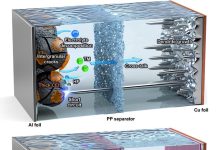
Fires caused by hidden batteries are a growing problem in recycling centers.
In Germany alone, more than 10,000 fires break out each year at waste sorting plants, and about 80% of them are caused by lithium-ion batteries.
These small but powerful batteries are commonly found in everyday items like smartphones, electric toothbrushes, and even singing greeting cards.
When people throw them away with their regular packaging waste, they often end up in recycling plants, where they can get damaged and catch fire.
These fires can cost the industry around one billion euros every year.
To solve this dangerous issue, researchers at the Fraunhofer Institute for Integrated Circuits IIS have launched the DangerSort project.
They are developing a smart sorting system that uses X-ray technology and artificial intelligence (AI) to detect and remove batteries from the waste stream before they cause harm.
The goal is to make recycling plants safer and improve how batteries are handled and recycled.
The prototype system works like an airport luggage scanner. Waste moves along a high-speed conveyor belt while an X-ray machine scans it from above.
A detector below the belt takes continuous X-ray images as the waste passes by. These images are then quickly analyzed by an AI system originally designed for self-driving cars.
The AI has been retrained to spot items that contain lithium-ion batteries, even when they’re hidden inside other waste or appliances.
Once a battery is detected, the system sends a signal to small air nozzles positioned along the belt.
These nozzles release a short burst of air at just the right moment to blow the battery-containing item off the belt and into a separate container.
This sorting process needs to be extremely precise, especially since batteries can vary widely in size—from tiny button batteries to large e-bike batteries.
The DangerSort system is still being tested at Fraunhofer IIS, but it will soon be sent to the waste management company LOBBE for its first real-world trial in June.
The project is part of a larger effort to use artificial intelligence in recycling and reduce the environmental impact of plastic and electronic waste.
If successful, it could become a key tool in creating a safer and more sustainable recycling system.
Source: KSR.



